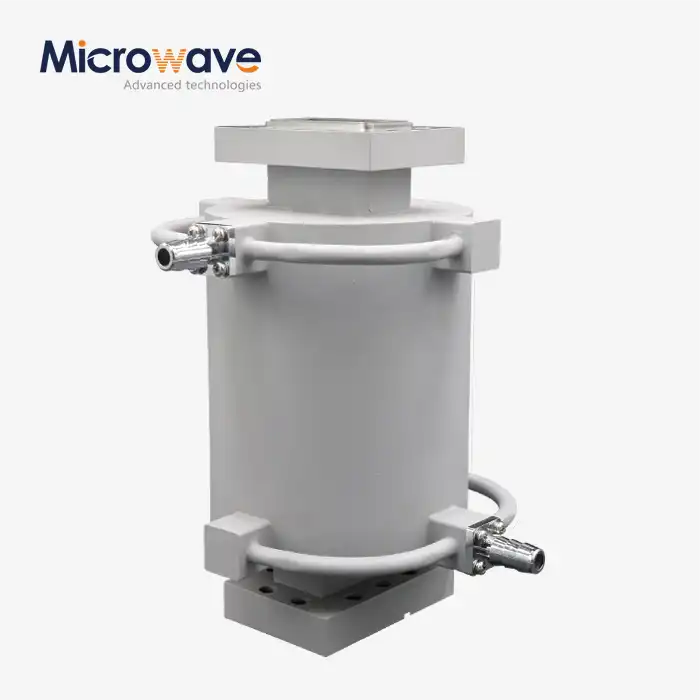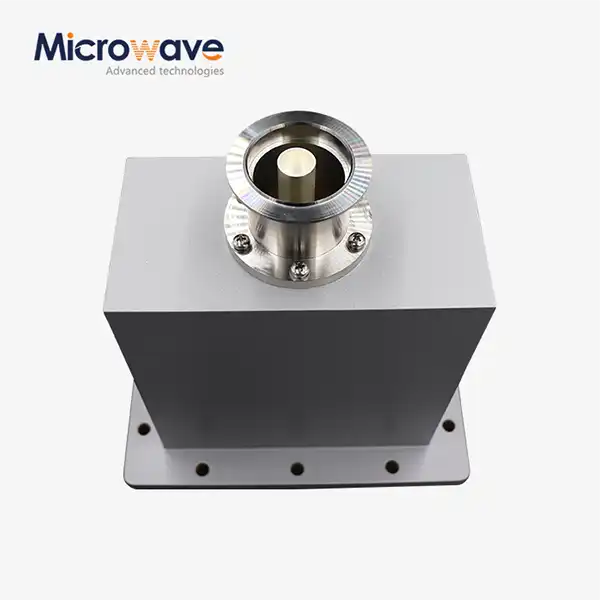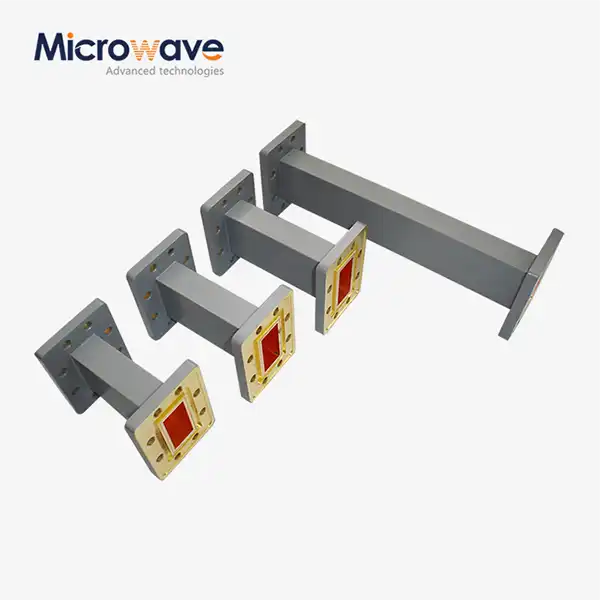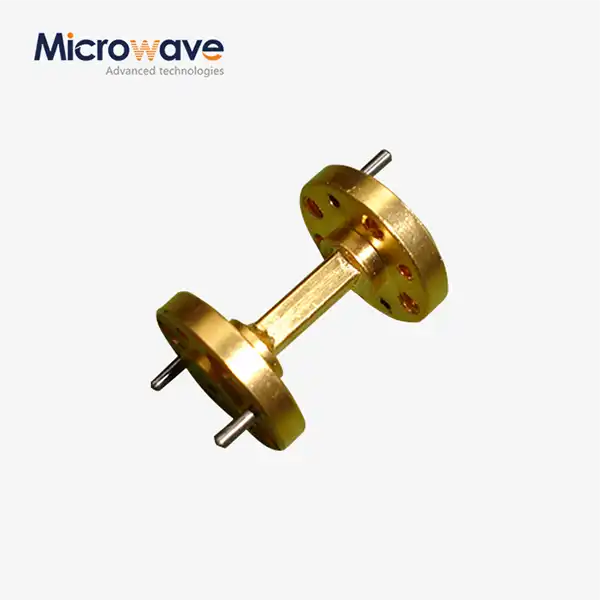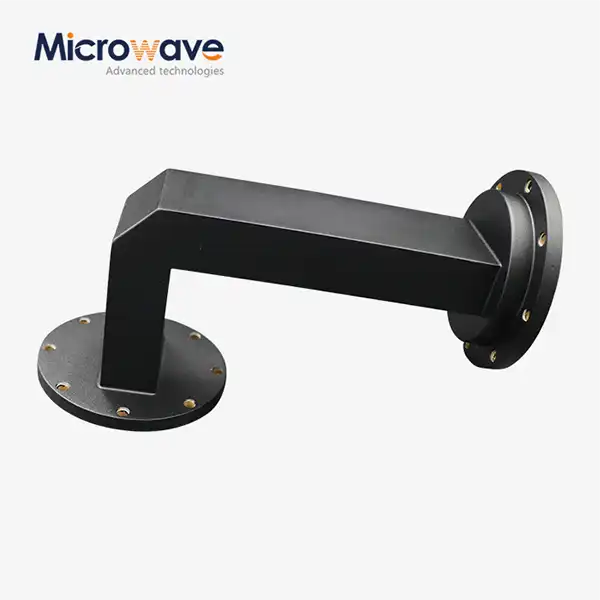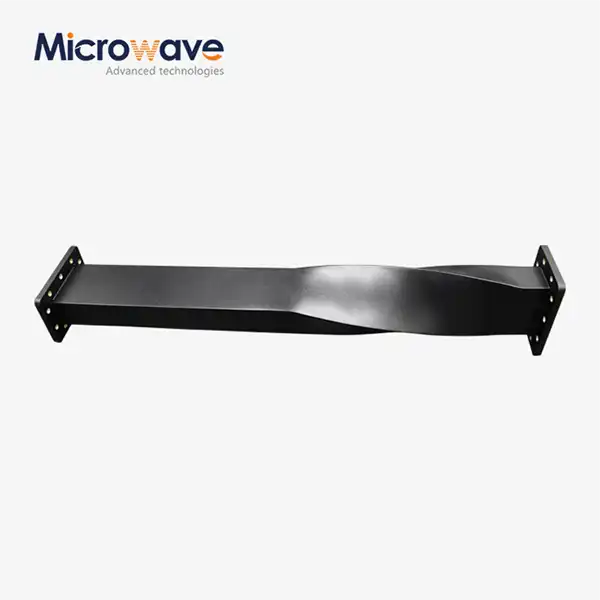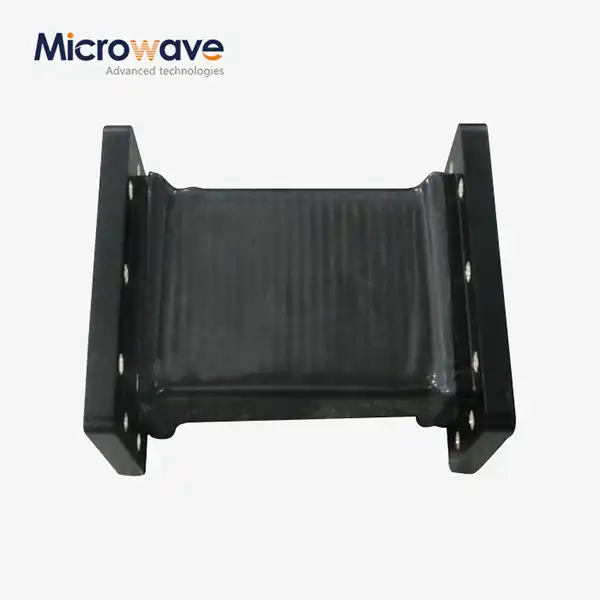Why Is Low Side Lobe Diagonal Linear Polarization Horn Antenna Critical for Precision Radar Applications?
In the demanding world of precision radar applications, the quality and performance of antenna systems directly determine the success or failure of critical operations. The Low Side Lobe Diagonal Linear Polarization Horn Antenna emerges as an indispensable component for applications requiring exceptional accuracy, minimal interference, and superior signal integrity. This specialized antenna technology addresses the fundamental challenges faced by radar engineers: unwanted radiation patterns, signal distortion, and interference that can compromise system performance. By incorporating diagonal linear polarization with low side lobe characteristics, these antennas deliver focused energy transmission while suppressing unwanted radiation patterns that typically plague conventional horn antennas. The precision radar community has increasingly recognized that standard antenna solutions often fall short when dealing with sophisticated detection requirements, target discrimination, and long-range surveillance applications where every decibel of signal clarity matters.
Understanding the Technical Superiority of Low Side Lobe Design
Fundamental Principles of Side Lobe Suppression
The Low Side Lobe Diagonal Linear Polarization Horn Antenna operates on sophisticated electromagnetic principles that fundamentally differentiate it from conventional horn antenna designs. Side lobes represent unwanted radiation patterns that occur outside the main beam direction, and their suppression is crucial for precision radar applications. Advanced Microwave's antenna series achieves remarkable side lobe suppression through electroformed rectangular-diagonal square waveguide conversion combined with precision-engineered square horn geometry. This innovative approach ensures that energy is concentrated within the desired radiation pattern while minimizing spillover into unwanted directions.The diagonal polarization aspect of the Low Side Lobe Diagonal Linear Polarization Horn Antenna provides enhanced versatility in handling various communication protocols and radar signatures. Unlike linear polarization systems that may suffer from signal degradation due to reflection and multipath interference, diagonal polarization offers improved signal stability and reduced susceptibility to environmental factors. The antenna's design incorporates high-performance aluminum alloy construction, ensuring durability while maintaining optimal electrical characteristics across the entire frequency spectrum from 2,000 to 60,000 MHz with gains selectable from 10 to 25 dB.
Advanced Electromagnetic Field Distribution
The electromagnetic field distribution within the Low Side Lobe Diagonal Linear Polarization Horn Antenna represents a marvel of modern antenna engineering. The transition from rectangular waveguide to diagonal square waveguide creates a unique field pattern that naturally suppresses unwanted radiation modes. This sophisticated field manipulation ensures that the antenna maintains consistent performance characteristics across both E-plane and H-plane orientations, providing equalized beamwidth that is essential for precision radar applications requiring symmetric radiation patterns.The antenna's frequency response extends up to 110 GHz, making it suitable for cutting-edge radar applications including automotive collision avoidance systems, weather monitoring radars, and advanced military surveillance platforms. The Low Side Lobe Diagonal Linear Polarization Horn Antenna maintains its superior performance characteristics throughout this extensive frequency range, with particular emphasis on maintaining low side lobe levels specifically on the E and H planes. However, it's important to note that when deviation occurs from these optimal angles, the low side lobe characteristics may become less pronounced, requiring careful system design and antenna positioning.
Precision Manufacturing and Quality Assurance
Manufacturing precision directly impacts the performance of the Low Side Lobe Diagonal Linear Polarization Horn Antenna, and Advanced Microwave Technologies Co., Ltd employs state-of-the-art electroforming techniques to achieve the required dimensional accuracy. The electroforming process allows for seamless integration between the waveguide transition and horn sections, eliminating potential discontinuities that could degrade electrical performance. This manufacturing approach ensures consistent impedance matching across the entire frequency band while maintaining the critical dimensional tolerances required for optimal side lobe suppression.Quality assurance protocols incorporate advanced measurement techniques utilizing the company's 24-meter microwave darkroom facility, which provides unparalleled capability for far-field antenna pattern measurements. The Low Side Lobe Diagonal Linear Polarization Horn Antenna undergoes comprehensive testing across its entire frequency range, with particular attention to side lobe level verification, gain measurement, and polarization purity assessment. The facility's Antenna Plane Near and Far Field Measuring Recombination Chamber enables detailed analysis of radiation patterns, ensuring that each antenna meets stringent performance specifications before delivery to customers.
Critical Applications in Modern Radar Systems
Air Traffic Control and Surveillance Radar
Air traffic control represents one of the most demanding applications for the Low Side Lobe Diagonal Linear Polarization Horn Antenna, where precision and reliability are paramount for aviation safety. Modern air traffic control radar systems require exceptional target discrimination capabilities to distinguish between closely spaced aircraft, particularly in high-density airspace around major airports. The low side lobe characteristics of these antennas significantly reduce false target generation caused by unwanted reflections from ground clutter, buildings, and atmospheric phenomena.The Low Side Lobe Diagonal Linear Polarization Horn Antenna excels in weather penetration capabilities, maintaining target detection accuracy even during adverse meteorological conditions. The diagonal polarization provides enhanced resistance to rain fade and atmospheric attenuation compared to conventional linear polarization systems. Advanced Microwave's antenna design incorporates optimized beamwidth characteristics that provide the ideal balance between angular resolution and coverage area, enabling air traffic controllers to maintain situational awareness across extensive surveillance zones while preserving the ability to resolve individual aircraft targets.Integration of Low Side Lobe Diagonal Linear Polarization Horn Antenna systems in air traffic control applications benefits from the antenna's stable impedance characteristics across the operational frequency band. The 50-ohm input/output impedance ensures compatibility with standard radar transmitter and receiver systems while minimizing signal loss through the RF chain. The lightweight construction facilitates installation on rotating antenna platforms without imposing excessive mechanical stress on positioning systems, while the robust aluminum alloy construction ensures reliable operation in harsh outdoor environments.
Defense and Military Radar Applications
Military radar applications demand the highest levels of performance from the Low Side Lobe Diagonal Linear Polarization Horn Antenna, particularly in surveillance, target tracking, and electronic warfare scenarios. The low side lobe characteristics provide crucial advantages in reducing the radar's vulnerability to enemy electronic countermeasures while simultaneously minimizing the system's electromagnetic signature. This stealth aspect is particularly important for mobile radar platforms that must maintain operational security while providing effective area surveillance.The Low Side Lobe Diagonal Linear Polarization Horn Antenna demonstrates exceptional performance in target discrimination scenarios where military radar systems must distinguish between legitimate targets and decoys or chaff. The superior side lobe suppression reduces false alarm rates caused by unwanted reflections from terrain features, vegetation, and atmospheric phenomena, enabling operators to focus on genuine threats rather than processing spurious target returns. The diagonal polarization characteristics provide additional advantages in penetrating certain types of electronic jamming and interference.Extended frequency coverage up to 110 GHz positions the Low Side Lobe Diagonal Linear Polarization Horn Antenna for integration with next-generation military radar systems incorporating advanced signal processing and artificial intelligence algorithms. The wide bandwidth capability supports sophisticated waveform generation techniques including frequency agility, pulse compression, and adaptive beamforming that enhance target detection and classification capabilities. Military applications particularly benefit from the antenna's customizable dimensions, enabling integration into existing radar platforms with minimal modification to mounting structures and RF distribution systems.
Satellite Ground Station Communications
Satellite ground station applications represent another critical domain where the Low Side Lobe Diagonal Linear Polarization Horn Antenna provides essential performance advantages. The low side lobe characteristics directly translate to reduced interference with adjacent satellite systems, enabling more efficient spectrum utilization and improved link quality for both uplink and downlink communications. This interference reduction is particularly important for geostationary satellite communications where multiple spacecraft operate in close angular proximity as viewed from ground stations.The diagonal linear polarization of the Low Side Lobe Diagonal Linear Polarization Horn Antenna provides enhanced flexibility for satellite communication systems that may employ various polarization schemes depending on mission requirements and orbital mechanics. The antenna's stable polarization characteristics across the frequency band ensure consistent signal quality regardless of satellite position within the coverage area, maintaining reliable communications throughout the satellite's operational arc.Ground station operators benefit significantly from the Low Side Lobe Diagonal Linear Polarization Horn Antenna's high gain characteristics, which directly improve link margins and enable reliable communications with satellites at extreme range or operating with limited power budgets. The customizable gain options from 10 to 25 dB allow system designers to optimize performance for specific mission requirements, whether supporting low Earth orbit constellations requiring rapid tracking capability or geostationary platforms demanding maximum sensitivity for weak signal reception.
Performance Optimization and Integration Considerations
System Integration and Compatibility
Successful integration of the Low Side Lobe Diagonal Linear Polarization Horn Antenna requires careful consideration of RF system compatibility and mechanical interface requirements. The standard 50-ohm impedance characteristic ensures compatibility with most radar and communication systems while minimizing reflection losses that could degrade overall system performance. The antenna's compact design facilitates integration into existing platforms without requiring extensive modifications to mounting structures or RF distribution networks.The Low Side Lobe Diagonal Linear Polarization Horn Antenna benefits from Advanced Microwave's comprehensive technical support throughout the integration process, including detailed modeling and simulation services that predict system performance before hardware installation. The company's experienced engineering team provides guidance on optimal antenna positioning, feed network design, and system calibration procedures that maximize the antenna's performance advantages. This technical support is particularly valuable for complex multi-antenna arrays where mutual coupling and pattern interactions must be carefully managed.Environmental compliance represents another crucial aspect of Low Side Lobe Diagonal Linear Polarization Horn Antenna integration, with RoHS compliance ensuring compatibility with modern electronics manufacturing requirements. The antenna's construction materials and manufacturing processes meet stringent environmental standards while maintaining the performance characteristics required for demanding radar applications. ISO 9001:2008 certification provides additional assurance of consistent quality and reliability throughout the product lifecycle.
Customization and OEM Services
Advanced Microwave Technologies Co., Ltd recognizes that precision radar applications often require customized antenna solutions tailored to specific performance requirements and integration constraints. The Low Side Lobe Diagonal Linear Polarization Horn Antenna platform provides extensive customization options including dimensional modifications, frequency band optimization, and specialized mounting configurations. These customization capabilities enable system designers to achieve optimal performance while maintaining compatibility with existing platform constraints.The company's OEM services extend beyond simple dimensional modifications to include comprehensive antenna system design and integration support. Low Side Lobe Diagonal Linear Polarization Horn Antenna customization encompasses electrical performance optimization, including side lobe level tailoring, beamwidth adjustment, and gain optimization for specific applications. The engineering team works closely with customers to understand their unique requirements and develop antenna solutions that exceed standard performance specifications.Prototyping services accelerate the development process for Low Side Lobe Diagonal Linear Polarization Horn Antenna applications, enabling customers to evaluate performance characteristics before committing to full-scale production. The rapid prototyping capability, combined with comprehensive measurement services using the 24-meter microwave darkroom facility, provides customers with detailed performance verification and optimization recommendations. This approach significantly reduces development risk and ensures that final antenna systems meet all performance requirements.
Long-term Reliability and Maintenance
The Low Side Lobe Diagonal Linear Polarization Horn Antenna incorporates design features that minimize maintenance requirements while ensuring reliable operation throughout extended service life. The robust aluminum alloy construction provides excellent resistance to environmental degradation including corrosion, thermal cycling, and mechanical stress. The antenna's passive design eliminates failure-prone active components, contributing to exceptional reliability in demanding operational environments.Maintenance considerations for the Low Side Lobe Diagonal Linear Polarization Horn Antenna focus primarily on periodic performance verification and cleaning procedures to maintain optimal electrical characteristics. The antenna's sealed construction prevents moisture ingress and contamination accumulation that could degrade performance over time. Advanced Microwave provides comprehensive maintenance guidelines and calibration services to ensure continued optimal performance throughout the antenna's operational lifetime.The Low Side Lobe Diagonal Linear Polarization Horn Antenna's proven reliability record, supported by over 20 years of manufacturing experience, provides customers with confidence in long-term system availability. The company's commitment to quality, evidenced by ISO certifications and comprehensive testing procedures, ensures that each antenna meets stringent reliability requirements. This reliability focus is particularly important for critical radar applications where system downtime can have serious operational or safety implications.
Conclusion
The Low Side Lobe Diagonal Linear Polarization Horn Antenna stands as a cornerstone technology for precision radar applications, delivering unmatched performance through innovative design and superior manufacturing quality. Its unique combination of low side lobe characteristics, diagonal linear polarization, and wide frequency coverage addresses the most demanding requirements of modern radar systems across aerospace, defense, and telecommunications sectors. The antenna's proven reliability and comprehensive customization options make it an ideal solution for both current applications and future radar technology developments.
Ready to enhance your radar system's performance with cutting-edge antenna technology? Advanced Microwave Technologies Co., Ltd brings over 20 years of microwave expertise, state-of-the-art testing facilities up to 110 GHz, and comprehensive OEM services to support your most challenging projects. Our team of expert engineers stands ready to provide customized solutions, rapid prototyping, and technical support throughout your development process. From initial concept to full-scale deployment, we deliver the quality, reliability, and performance your precision radar applications demand. Contact us today at craig@admicrowave.com to discuss how our Low Side Lobe Diagonal Linear Polarization Horn Antenna can revolutionize your radar system's capabilities and take your technology to the next level.
References
1.Balanis, Constantine A. "Antenna Theory: Analysis and Design." Fourth Edition, Wiley-Interscience, 2016.
2.Stutzman, Warren L. and Gary A. Thiele. "Antenna Theory and Design." Third Edition, John Wiley & Sons, 2012.
3.Milligan, Thomas A. "Modern Antenna Design." Second Edition, IEEE Press/Wiley, 2005.
4.Silver, Samuel. "Microwave Antenna Theory and Design." MIT Radiation Laboratory Series, Institution of Engineering and Technology, 1984.
5.Collin, Robert E. and Fawwaz T. Ulaby. "Antennas and Radiowave Propagation." McGraw-Hill Science/Engineering/Math, 1991.
6.Love, A. W. "Electromagnetic Horn Antennas." IEEE Press Selected Reprint Series, Institute of Electrical and Electronics Engineers, 1976.




